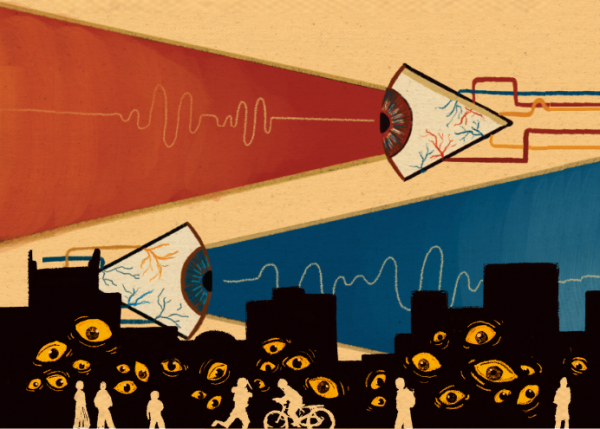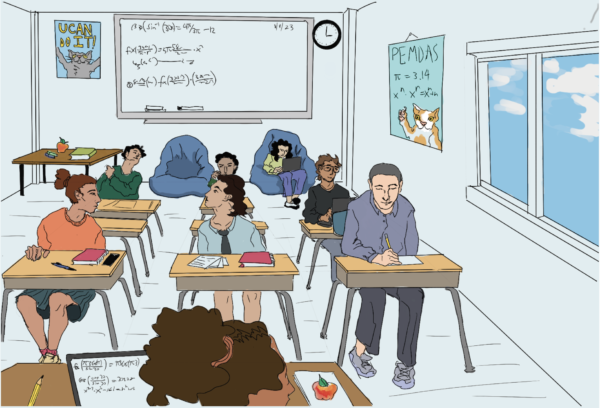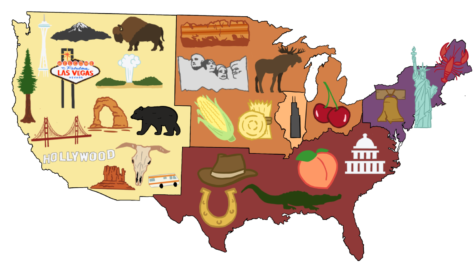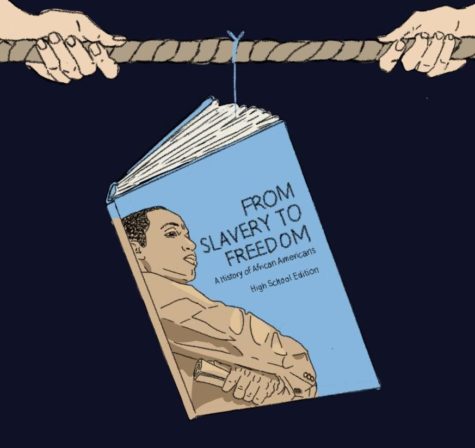Oil and water
Social integration has yet to come to fruition
October 16, 2017
ETHS is known for priding itself off its diversity, yet there is one aspect that is constantly being overlooked; social segregation among students is rarely talked about.
“Socially speaking, people go to sacred spaces where they are able to hold on to their identity,” Sociology teacher Corey Winchester says.
The cafeterias, for example, are a clear display of the segregation that occurs at ETHS. The makeup of ETHS is fairly diverse, yet most lunch tables consist of primarily one race.
“I feel like eating, itself, is such a social activity, and while ETHS is diverse and represented, students naturally are going to flock to other students who they feel comfortable around,” senior Meghan Harris says. “A lot of times this comes down to race.”
Inevitably, people sit with their friends at lunch, making it clear that the divide in the lunchrooms stems from something greater; segregation within friend groups.
“I do think it is easier to relate to someone who looks like you,” sophomore Lorena Santoyo says. “People that look like you or share the same race as you often share the same experiences.”
Likewise, location can have a significant impact on whom students relate to, which social groups they join and how comfortable they are in any given setting. According to Winchester, segregated housing demonstrates that perfectly.
“You can’t control where you live, and while you may have friend groups that are diverse,” Winchester says. “At the end of the day you are still going back to your home in these segregated places.”
Certainly, housing segregation is not the only factor that contributes to social segregation. According to former librarian at Evanston Public Library Lesley Williams, preconceived notions that white students have about people of color cause a sense of unwillingness, and even an indifference, to expand their variety of friends.
“Prejudices that parents have get passed along,” Williams says.
This past May, Williams took to social media to question Evanston’s commitment to fostering diversity. It has been speculated Williams was, unfortunately, suspended for her critiques. While, Williams did not lose her job directly from this incident, she did quit thereafter due to the tension that arose.
Though unity among students sounds ideal, many don’t think it’s necessarily the be all end all. Some not only doubt the mere possibility of absolute integration, but also, fear it may bring about more issues than good.
One of these potential issues is the concept of opportunity hoarding, or the idea that the majority group, particularly in racially integrated societies, restricts any or all access to scarce resources in the community such as housing, education, and even jobs.
Williams noticed a presence of opportunity hoarding within a District 65 elementary school. The school’s PTA, which was made up of primarily middle to upper income white women decided to put funds towards a running track, rather than a more equitable cause.
“The problem is that you have people at that high end making spending decisions for people at the low end, and without making a successful effort to include their perspectives,” Williams says.
ETHS is certainly rich in diversity of race, culture, sexual orientation, gender identity and religion. While, many may disagree about what the solution to social segregation- if any – should be, many may also agree that social integration is an issue that needs to be addressed at ETHS, even if it cannot be fully solved.




















